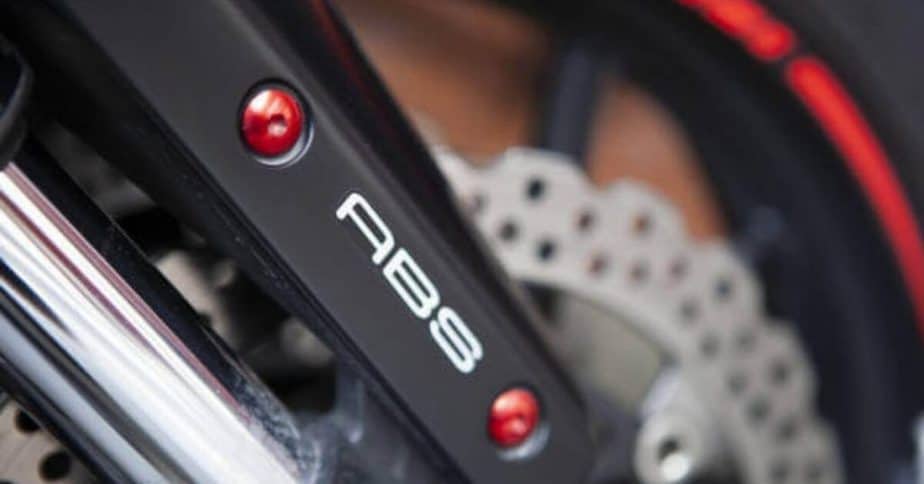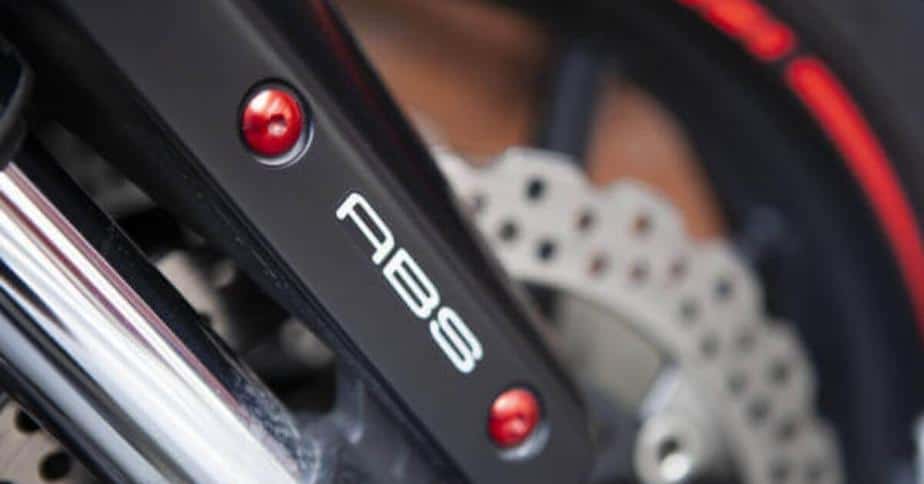Yes definitely you can, ABS is a great safety feature for beginners and advanced riders alike. ABS systems work by sending pulses of pressure to the braking system at varying intervals, which helps maintain stability in your ride when you need it most – like during an emergency stop or sharp turn on the wet pavement!
But if you plan to take off-road trips where there’s less friction between rubber tires and ground (such as sand), then maybe ABS isn’t worth it because those pulse impulses will be too powerful compared with other surfaces.
ABS systems for motorcycles are becoming lighter and smaller than ever before. Several riders are concerned that an ABS system will add too much weight or gaudiness to their bikes, but the newest models weigh as little as 1.5 pounds and are small enough to be concealed by your motorcycle’s bodywork.
ABS units have become progressively more lightweight in recent years – some new models weighing less than one pound! These devices provide such versatility for bikers; protecting them from nasty falls whether it’s on asphalt roads or dirt paths.
The latest designs also offer distinct advantages over other braking technologies like disc brakes because of how well-suited they are to wet conditions.
ABS is one of the most important features on a motorcycle. Now it is important that ABS has become compulsory for all bikes with an engine larger than 125cc, you can be sure better protection and safety will never leave your side ever again and you can ride safely.
ABS stands for anti-lock braking system which helps keep motorcyclists safe no matter how chaotic things get in traffic or accidents happen around them.
It may seem like such a small thing considering motorcycleAnti-lock brakes have just made motorcycle riding safer.s are smaller vehicles without airbags – but trust me when I say this feature could save somebody’s life someday soon. (especially now since we’re going into monsoon season).

It can be difficult to install an anti-lock braking system on a motorcycle; it’s not as simple as bolting some parts together.
Knowing what you’re doing goes a long way in making sure the installation is done right and that your bike will work properly when driving, so make sure to get this job handled by someone who knows their stuff.
How Important Is The ABS System For Motorcycles?
Riding a motorcycle just got safer with the introduction of anti-lock brakes. A motorcycle accident is 35% less likely to occur if the ABS is in place, according to the Insurance Institute for Highway Safety.
This is because this safety feature allows motorcycles to stop quickly during emergencies and prevents them from skidding out of control when braking hard.
Anti-lock brakes save lives. ABS is a lifesaver and prevents riders from hydroplaning or spinning out of control on slick surfaces such as wet ice, snow, rain, or oil slicks.
Anti-lock braking systems (ABS) help drivers maintain stability in slippery conditions like rainy weather and snowy roads by preventing the bike wheels from locking up during hard brake applications which can cause sideways skidding that may lead to accidents if not controlled properly.
This also prevents you from hydroplaning when riding through puddles with water at high speeds because it lets your tires grip better onto the pavement instead of just slipping around trying to find traction while stopping so quickly before crashing into something headfirst.
ABS technology is designed to keep the bike under control and steer it out of dangerous situations.
It can be life-saving, as it prevents your wheels from locking up which could lead to skid conditions on slippery surfaces.
ABS motorcycle technology is becoming popular among riders. ABS has become standard on cars and trucks, but not motorcycles yet.
Most motorcyclists agree that this feature gives them more control over the bike in dangerous situations when braking becomes difficult to manage due to slippery surfaces or panic brake scenarios like an overturning vehicle ahead of you unexpectedly stopping short.
However, some people do argue that it isn’t necessary for all types of terrain – such as desert roads without a lot of traffic- because they are able to easily stop by going down into their gears (a technique called “heel-toe” wherein with one foot planted firmly on the ground while squeezing both brakes at once) which helps stabilize your balance before coming back up onto two wheels again.
ABS motorcycles have had explosive growth over the past few years and some riders love them! The question lies in whether or not these brakes offer more than just safety benefits–
whether skid-control while cornering offers something extra comparable to what you would get from anti-lock braking systems (which come standard with cars).
How much does it cost to add ABS to a motorcycle?
Many people wonder how much ABS costs. There are many different factors that contribute to the cost including but not limited to color, size, and style of accessories; it’s hard for even an expert at this trade show to accurately give you a price anytime soon.
According to one of the motorcycles mechanic Said that installing of abs system can Cost around $300-$350.
You might be wondering what is exactly the “cost” of ABS material? This can depend on things like its style, or where in the country it was produced so we really don’t know just yet.
also read: Can You Put Turbo On A Motorcycle?
Best ABS Kit For Motorcycles
Take a Look at to our Tips for finding the best ABS Kit for Motorcycles
Fitment
All types of motorcycles have abs such as
- Benelli BN302
- Honda CBF190
- Yamaha R15
- Honda CBF150
- Another 12V motorcycle with a brake signal
Specification
- Material: Stainless Steel & Aluminum Alloy & Plastic
- Color: Every product have different
- Package Weight: Approx. 1234g
Assocceress
- Pump Body
- gear ring
- Sensor
- Wiring Harness
- fuse box
- warning signal box
- set of support
ABS vs Non-ABS Motorcycles
ABS Motorcycle
- The anti-lock braking system (ABS) is a highly sophisticated, technologically advanced system designed to aid in maintaining the control of your vehicle during adverse weather conditions and mitigate the dangers that come with panic braking.
- Various studies have found that antilock brake-equipped vehicles are 35% less likely to be involved in an accident than those without antilock brakes.
- The Anti-lock braking system can quickly and efficiently stop your bike when you are having trouble stopping by yourself. The ABS works with wheel sensors, other essential components sensing skid conditions that activate the ABS if there is a possible collision on the horizon.
- It prevents drivers from going into panic mode where they would pump their brakes aggressively which in turn makes it more likely for them to have control over safety during collisions since this happens automatically without much effort from motorists themselves.
- Additionally, traction is encouraged, which will keep the vehicle from skidding, thus reducing the risk of wheels locking. When tires lock, they are likely to slide dangerously across the road’s surface; especially if it is wet and slippery without giving control back up to the driver.
- Motorcycles are equipped with anti-lock brakes are among the most important safety features on the market today. They help drivers maintain control over their vehicles and prevent accidents in slippery conditions like braking on an icy road. ABS is not just for winter driving, it’s also useful when you need to stop quickly or bring your car to a slow rolling stop as well.
- Using ABS is a lot different from regular brakes. The system will not engage if you’re using a regular brake at a stop sign, red light, or vehicles slowing ahead. Early braking should always be your best bet in any situation – but if things go south and have to brake quickly and suddenly then bra-ABS will kick on.
Non-ABS Motorcycle
- Braking in slippery conditions is important for drivers who don’t have anti-lock brake systems. Firmly applying the brakes can avoid a potential accident on slick roads which may otherwise be unavoidable with just regular brakes alone.
- ABS is now a standard and essential requirement on most cars imposed by the federal government in 2011. then why not for bikes If you want your bike to stop in a safe and timely manner when the brakes are pressed suddenly due to slippery roads or wet surfaces, this feature should be the top priority for drivers of all skill levels.
- If you don’t have ABS then first brake hard and firm at first before slowly releasing as you slow down to avoid any skidding or slipping hazards during those cold winter months when icy roads are just waiting for an unfortunate driver like yourself.
- ABS stands for Anti Lock Braking System which helps drivers maintain steering control while braking by preventing wheel lock-up in emergency stops from high speeds with little resistance against either acceleration pedal under slippery conditions. especially during these colder months where icing/snowing makes driving hazardous without enough traction present to keep one’s vehicle moving in a straight line. if you still confused take a look at to the listed video. then hopefully you will have better idea about abs vs not abs system on motorcycles
When Did ABS Become Standard On Motorcycles?
The first ABS braking systems designed specifically for motorcycles saw the light of day in 1988 and have been around ever since.
The very first system was a variation from an anti-lock brake system that had been introduced on cars 10 years earlier, which made it quite bulky too, with some 11kg weight to its name.
The braking characteristics of two-wheeled vehicles are completely different from those of four-wheelers. Eventually, motorcycles developed their own systems and by 2025 it will be compulsory for all bikes over 125cc to have an ABS system installed in order to avoid accidents due to collisions or tumbles on steep slopes.
The ABS system is one of the most groundbreaking developments in motorcycle safety. It uses an extensive array of sensors to register all sorts of data about your ride like how fast you’re going, and whether or not you are leaning into turns.
The traditional wheel sensor measures rotational speed as well as lean and pitch angles while an inertia module computes over 100 measurements per second for a more detailed view of things.
According to lean angles, ABS computations determine how much brake force is acceptable. In the event a wheel starts to lock, then the system activates the pressure modulator to release or apply the brakes as necessary.
Pros and Cons of ABS On Motorcycles
Modern Motorcycles are changing the game for safety. The anti-lock braking system (ABS) is now one of the most common features on modern vehicles and with good reason
With ABS in place during a hard stop, you reduce your chances of locking up brakes and causing an accident or serious injury when there are slippery conditions like rain.
Here are the pros and cons of ABS.
Pros
- In addition to providing better control over braking, ABS is one of its biggest benefits. You don’t need to use as much brake pressure and it can help you stop at a shorter distance, which makes riding safer for drivers behind you who might not expect sudden braking.
- Braking on the corner is dangerous, but you don’t have to be scared of the brake. You can use C-ABS technology and an IMU sensor that detects pitch, yaw, and roll data from your bike in order to make yourself safer when braking around corners or debris on the road.
- Locking your wheels reduces your steering ability tremendously. This is another big advantage of ABS because it prevents the vehicle from locking up while still giving you control over steering inputs if necessary- even in slippery conditions like rain.
- ABS technology is a great investment for your vehicles. In addition to making your vehicle safer, it also adds to its value, so if you plan on selling it or trading it in, you’ll be able to get a bit more money for it.
Cons
- The primary cons of the Anti-lock brakes system are the increased cost it adds to the overall price of a vehicle. This can be especially difficult for those on limited incomes and/or budgets, discouraging more people from purchasing safer vehicles with these enhancements that are crucial in reducing automotive accidents. In addition, maintenance costs go up as sensors on each wheel (that have expensive calibration) become less efficient over time due to heavy usage.
- A reason for concern is that these electronic systems are quite fragile and can be easily damaged by adding more mechanics to your bike.
- If you drive in really extreme weather conditions, it might be necessary to have the ABS sensors inspected or replaced.
Motorcycles Without ABS (Motorcycles without ABS should i worry)
Not at all If you are a good rider, it is not necessary to add ABS. But if wanted, You can fit the ABS braking system with them and change some components in order for everything to work correctly.
Rear disc + caliper fronts discs must be changed along with Bosch ABS sensors when adding on this type of feature which may need expert service center help at times as well depending on what needs changing out or fixed up before being able to complete installation onto your vehicle either way though those would be the costs associated with doing so.
But ABS technology not only prevents your wheels from locking up, but also helps to keep you safe in dangerous situations.
When your bike begins to skid and loses traction on a slippery surface, ABS can be the difference between life or death because it’s designed specifically for this purpose!
ABS stands for Anti-lock Braking Systems which means that when you’re traveling at high speeds such as 60 miles per hour and hit an obstacle like gravel or ice all of sudden with no warning whatsoever;
instead of flipping over completely into a violent crash where even if we survive injuries are inevitable – without ABS our chances would be slim considering how fast bikes travel now vs 20 years ago.
i hope this helps let me know if you have any other questions regarding ABS in motorcycles.

